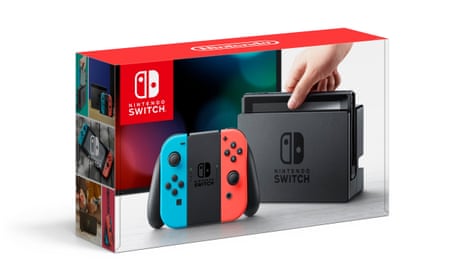It could probably only happen to Nintendo. While other console manufacturers have dutifully stuffed their consoles with ever more expansive hard drives, the Kyoto-based veteran has always been somewhat penurious with storage. Its next release, the delightfully eccentric Switch, contains only 32GB of internal memory, around 4GB of which is reserved for the operating system. Sure, this probably keeps the manufacturing costs down, but it presents a problem. This week, the official Japanese Switch page revealed a host of forthcoming titles, together with their file sizes. One, a double pack featuring Dragon Quest Heroes I and II, comes in at ... 32GB. Which means if you buy the digital version from the Nintendo eShop, it won’t fit on your console.
There are some mitigating factors here. Dragon Quest Heroes I & II collects two full-size PlayStation releases into one package, so it’s an unnaturally large proposition. The file sizes for other games were mostly around 1GB to 5GB, with Legend of Zelda: Breath of the Wild coming in at 13.4GB. Also, unlike the PlayStation 4 and Xbox One, the Switch doesn’t demand that physical games are installed on to the hard drive before you can play, so if you buy a boxed copy of Dragon Quest Heroes I & II, you won’t have any issues. But if you do plan on making a lot of eShop purchases on your new machine, you’re going to have to buy a MicroSD card for extra storage space. A 128gb card comes in at around £35.
Of course, Nintendo watchers shouldn’t be surprised. When the Wii U first launched, it had two iterations: a basic machine with a mere 8GB of hard drive storage and a Premium version with ... a mere 32GB of hard drive storage. Before this, the original Wii didn’t even have a hard drive – just 512MB of internal flash memory and, yes, another SD card slot. To begin with, Wii users weren’t even able to download digital games and content directly to a card – it wasn’t until 2008 that Nintendo announced it would make that possible: “We have to address the console’s insufficient memory storage,” said then-president Satoru Iwata.
Will this recurrent memory problem be an issue? Possibly not for many users – especially as there’s no confirmed release for Dragon Quest Heroes I & II outside of Japan. However, in a games industry where lots of the most interesting games are coming from independent developers who are limited to digital distribution by the need to keep costs low, it could prove annoying. The Switch is set to be launched with no bundled software, a move designed to keep the retail price low – but if purchasers need to buy a game and an SD card, the costs are rising.
The thing is, when Nintendo gets everything else right, storage is not an issue. The Wii, with its paltry flash memory allocation, sold over 100m units. In the case of that classic machine, the memories that counted were not about gigabytes, they were about seeing your gran playing tennis in the living room.

Comments (…)
Sign in or create your Guardian account to join the discussion